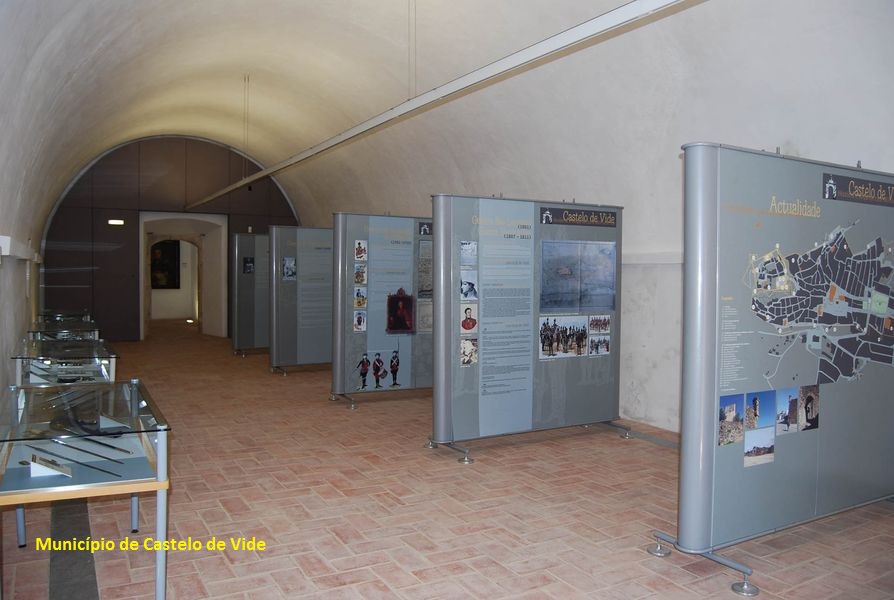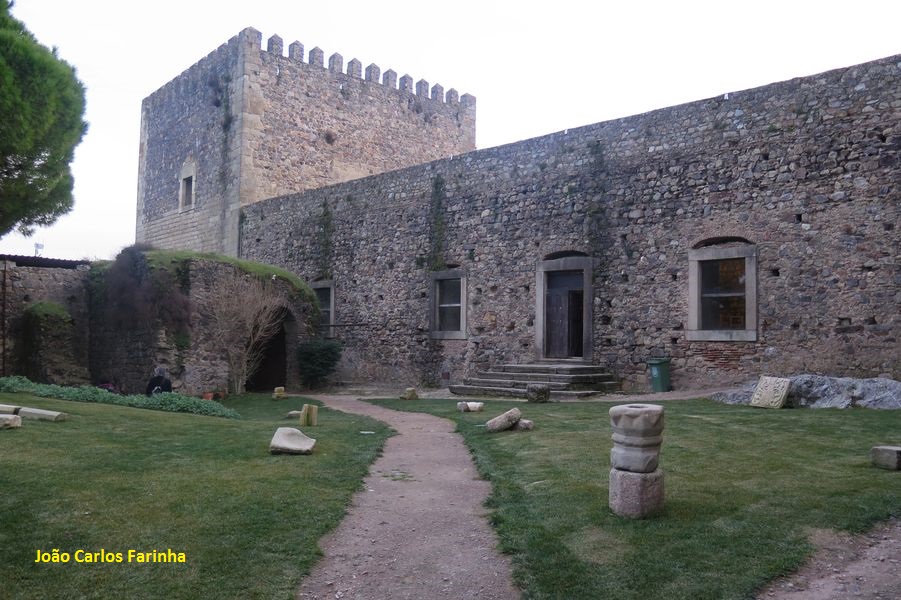&nbps
Share Image
In 2016, the castle houses the Megalithic Interpretation Center and the Museum of History and Military Architecture of Castelo de Vide, this last one, allows you to better understand Castelo de Vide's history.
It has two essential parts: the parade ground bordered by walls and towers, around which are arranged the warehouse and defense structures; and the rest corresponding to the old village. The castle entrance is through the southwest side, with a Barbican, through a door giving access to a tunnel leading into the courtyard. This still has the well drawn in Duarte D'Armas plant.
The Torre de Menagem (Homage Tower) in the south angle of the walls has an octagonal room, large rectangular windows and 8 pillars with base and chapiter. Until 1978, it was restored given that in 1705 suffered an explosion, when it was occupied by the Spanish, and more damage during the great 1755 earthquake that destroyed Lisbon and several other places in Portugal.
Portas da Vila (village doors) are on the southeast, by accessing Direita street where were the Municipality and Jail houses of the as well as the mayor and the local ruling class, which runs through the old town to exit on the opposite side by the São Pedro doors.
In the seventeenth century, during Guerras da Restauração (Independence Wars), took place the 3rd major works. So in 1641, after the proclamation of independence, the works began, enlarged from 1642 under Nicholas Langres project. Sign of its importance, in 1660, it housed a garrison of 600 men and 3 cavalry companies, with 2 forts, the one of the castle (West) and the São Roque (East), the star-plant and large bastions and unevenness of land, linked by an extensive line of walls that surrounded the village, which however had grown beyond the medieval village.
In 1823, the fortress lost its defensive importance and today is only a sign of old border fighting. The castle is classified as National Monument.
-
Castelo de Vide castle and museums
-
In 2016, the castle houses the Megalithic Interpretation Center and the Museum of History and Military Architecture of Castelo de Vide, this last one, allows you to better understand Castelo de Vide's history.
It has two essential parts: the parade ground bordered by walls and towers, around which are arranged the warehouse and defense structures; and the rest corresponding to the old village. The castle entrance is through the southwest side, with a Barbican, through a door giving access to a tunnel leading into the courtyard. This still has the well drawn in Duarte D'Armas plant.
The Torre de Menagem (Homage Tower) in the south angle of the walls has an octagonal room, large rectangular windows and 8 pillars with base and chapiter. Until 1978, it was restored given that in 1705 suffered an explosion, when it was occupied by the Spanish, and more damage during the great 1755 earthquake that destroyed Lisbon and several other places in Portugal.
Portas da Vila (village doors) are on the southeast, by accessing Direita street where were the Municipality and Jail houses of the as well as the mayor and the local ruling class, which runs through the old town to exit on the opposite side by the São Pedro doors.
In the seventeenth century, during Guerras da Restauração (Independence Wars), took place the 3rd major works. So in 1641, after the proclamation of independence, the works began, enlarged from 1642 under Nicholas Langres project. Sign of its importance, in 1660, it housed a garrison of 600 men and 3 cavalry companies, with 2 forts, the one of the castle (West) and the São Roque (East), the star-plant and large bastions and unevenness of land, linked by an extensive line of walls that surrounded the village, which however had grown beyond the medieval village.
In 1823, the fortress lost its defensive importance and today is only a sign of old border fighting. The castle is classified as National Monument.
-
Alentejo
-
Castelo de Vide
-
Serra de S. Mamede Nature Park
-
Município de Castelo de Vide
Identification and Access
-
Yes, inside Castelo de vide.
-
Access to Castelo de Vide from:
- Marvão (about 2:10h, 9,7 km) – N359-6, EM1033, EM1033-1 and N246-1*; or
- Portalegre (about 3:50h, 18 km) – N359, N246 and N246-1.*
*In Castelo de Vide, go to the castle on foot by Pé da Torre street.
Contacts, Schedules and other informations
-
Museum (nuclei)
-
Exhibitions
-
See the website. 9 a.m. – 1 p.m. and 2 p.m. – 5 p.m. (Oct. 1 to May 31) and 9 a.m. – 1 p.m. and 3 p.m. to 6 p.m. (June 1 to Sept. 30)
-
No
Tips
-
Take photos of Castelo de Vide from the walls, visit the medieval district within the castle walls and close by take a look at the Museum of the Synagogue and the old Jewish quarter.
Learn more
- Castle of Castelo de Vide (in Portuguese) Ulysses, Portuguese heritage information system / DGPC
- Castelo de Vide castle (in Portuguese)
- Castelo de Vide castle (in English)
- Núcleo Museológico de História e Arquitetura Militares de Castelo de Vide (Castelo de Vide’s History and Militar Architecture Nuclei) in Portuguese.














